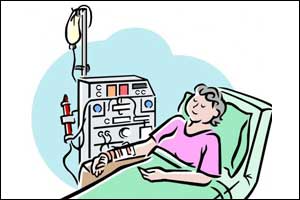- Home
- Editorial
- News
- Practice Guidelines
- Anesthesiology Guidelines
- Cancer Guidelines
- Cardiac Sciences Guidelines
- Critical Care Guidelines
- Dentistry Guidelines
- Dermatology Guidelines
- Diabetes and Endo Guidelines
- Diagnostics Guidelines
- ENT Guidelines
- Featured Practice Guidelines
- Gastroenterology Guidelines
- Geriatrics Guidelines
- Medicine Guidelines
- Nephrology Guidelines
- Neurosciences Guidelines
- Obs and Gynae Guidelines
- Ophthalmology Guidelines
- Orthopaedics Guidelines
- Paediatrics Guidelines
- Psychiatry Guidelines
- Pulmonology Guidelines
- Radiology Guidelines
- Surgery Guidelines
- Urology Guidelines
New effective ventilation system reduces incidence of hospital airborne infections

Researchers at the University of Cordoba have developed an effective displacement ventilation system that reduces those infections that are airborne in a hospital setup. It is common for patients especially elderly and immunocompromised patients to get admitted to the hospital for a specific illness or infection and coming down with another during one's hospital stay. The study published in Plos One emphasizes the need for Efficient ventilation in hospital airborne isolation rooms vis-à-vis decreasing the risk of cross infection and reducing energy consumption.
According to the European Centre for Disease Prevention and Control (ECDC), 6% of hospital patients get an infection while staying at the hospital, which generates a financial impact of 7 trillion euros in Europe as a whole. Hospital-acquired infections are caused by viral, bacterial, and fungal pathogens; the most common types are bloodstream infection (BSI), pneumonia (eg, ventilator-associated pneumonia [VAP]), urinary tract infection (UTI), and surgical site infection (SSI).
More than 90% of hospital facilities and other buildings use what are called mixing ventilation systems, as Professor Manuel Ruiz de Adana, one of the main authors of the study, explains. These systems push new air into the upper part of the room, which is not where the patient is located. Later, this new air is mixed with the air in the room and pollutants decrease.
To look into this problem, the research group studied the risk of infection in a different kind of ventilation system, -known as displacement ventilation- in which air is pushed at low speeds into the area where the patient is located. The air in the room, exposed to pollutants, is literally "displaced" and rises to the upper part of the room once it warms up in the room. Instead of lessening the number of pollutants, this system pushes them from one side of the room to the other until they go out through the room's vents. In this way, there is clean airflow, working like a piston, in the area where patients and health care workers are located.
"We cannot control people's prevention habits, but we can control the air they breathe," explains Professor Ruiz de Adana. In order to do so, the group analyzed this ventilation method's potential to control airborne infections by using thermal mannequins outfitted with breathing systems. They carried out several experimental trials injecting a pollutant that simulated a pathogen in the mannequin's lungs as well as at a number of locations around the room.
After evaluating and measuring different parameters, the study, carried out in the framework of the TRACER research and development project, concluded that displacement ventilation systems can reduce the risk of exposure to airborne pathogens compared to other traditional systems. This is a ventilation mechanism, says researcher Ruiz de Adana, that comes from the Nordic countries, countries where because of climate conditions, people spend a great amount of time indoors. However, "it is not normally used in hospitals and a study on this scale and for this specific use had not been performed before."
According to regulations established by the Centre for Disease Prevention and Control, ventilation systems should refresh all the air in a hospital room 12 times an hour in order to reduce airborne infections. With this new proposed ventilation system, going by the data shown by the study, it will only be necessary to refresh the air nine times an hour, without the risk of infection changing, meaning in addition to health benefits, the system will also cut energy use.
For more details click on the link: DOI: 10.1371/journal.pone.0211390

Disclaimer: This site is primarily intended for healthcare professionals. Any content/information on this website does not replace the advice of medical and/or health professionals and should not be construed as medical/diagnostic advice/endorsement or prescription. Use of this site is subject to our terms of use, privacy policy, advertisement policy. © 2020 Minerva Medical Treatment Pvt Ltd